‘Our awkward home has increased £224,000 in value – thanks to our budget renovation’
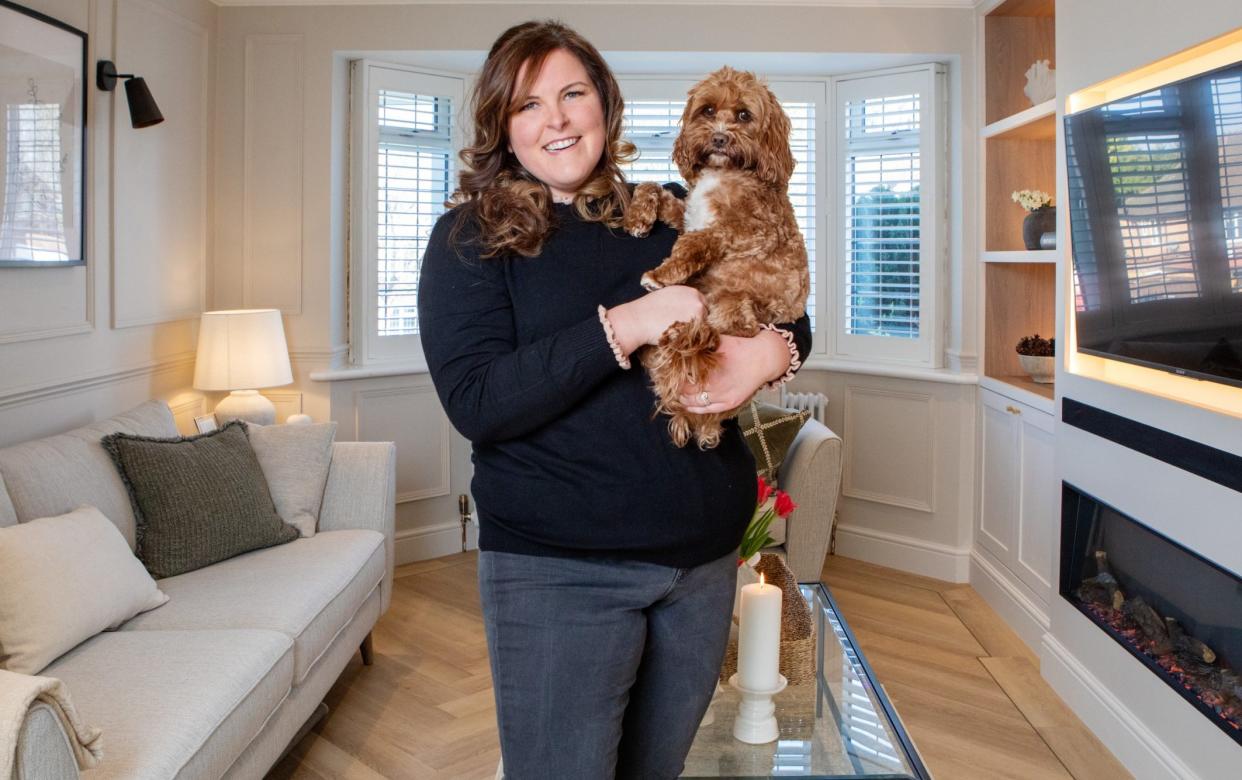
Weekend renovators Jane and Paul Bergin have become experts at making the most out of every inch of their awkwardly designed, 1960s semi.
The five-bedroom property in Surrey had been lived in by the same owners for 40 years. Unphased by the outdated décor and design, the couple drove a hard bargain over the price, knocking the seller down from £635,000 to £586,000.
In August 2019 Jane, 35, and Paul, 37, moved in three days after getting engaged. They were forced to juggle full-time jobs in London – Jane as real estate lawyer and Paul as a joiner for wealthy families – with renovating at weekends.
Although the property was structurally sound, oddly designed rooms and a disjointed ground-floor layout added to the work needed to transform their home.
Telegraph Money asked interior designer and stylist Francesca Harris to cast her expert eye over the Bergins’ home makeover to tell us how it measures up.

The renovation began upstairs when Paul was on furlough leave during the pandemic. He converted a small, disused space that must be passed through to get to the master bedroom into an oak-lined dressing room.
By the time they were ready to begin work downstairs, he was back at his day job and the renovation slowed down. Not least because almost all the doors and windows had to be knocked out and repositioned to let light into their home.
Jane said: “We lived without doors and windows from February to June. We back onto woods so foxes would stray into the house at night.”
It took the builders three months to complete the reconfiguration and plaster the walls before the couple took over. Jane took charge of the design of their home while Paul dealt with the practical tasks. Any job that wasn’t carpentry, such as the tiling and flooring, was self taught from watching YouTube videos.
Aside from seeing design ideas from fellow renovators on Instagram, they took inspiration from the grand homes that Paul works in and turned them into budget-friendly alternatives.
The couple have amassed a large following on their renovatingnumber174 Instagram account, sharing their home DIY and budget friendly tips.
In the four years they’ve lived at the property, thanks to house price inflation and the couple’s hard work, they have had an estimated valuation of between £780,000 and £810,000 – an increase of up to £224,000.
They remodelled the downstairs layout by cutting the lounge, which originally ran from the front to the back of the house, in half. The kitchen, separated by black pocket doors, is situated at the back of the former lounge.
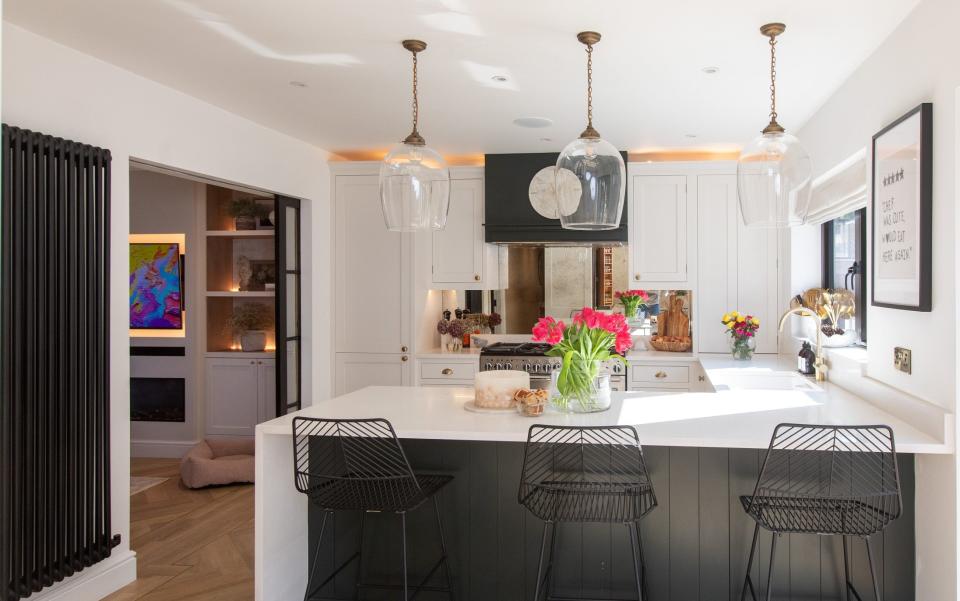
Structural complications meant that a dark corridor leading off the kitchen to the dining room couldn’t be taken out but could be made wider, by just 20cm.
Unwilling to have unusable space in their home, Jane and Paul got creative. They transformed the corridor into a utility room with two sliding pocket doors.
The kitchen
Awkward and restricted spaces are a theme throughout their home. The kitchen was no exception. Jane had to abandon her goal of having a kitchen island because there wasn’t enough space to move around it. She decided a peninsula suited the layout better.
Francesca said: “In an era where everyone seems to want a kitchen island, sometimes, like Jane and Paul, you have to realise they aren’t always the best option.
“In smaller kitchens, they can take up more space than they deserve, and whilst the storage can be great, do we all actually want to be sitting right next to each other to eat?
“There is a reason dining tables have chairs around them, it’s so we can see each other and interact whilst eating. It’s a trend that you need to evaluate whether it works for you and not just jump on it for the sake of it.”
The bespoke kitchen was painted studio green and fitted by Paul, but came from Tulip Kitchens.
Paul made a mantel to hide the cooker hood and turned a small space, formerly home to the original cooker, into Jane’s long-dreamed-of pantry after being told they could not knock the wall down due to structural issues. The cabinetry, painting, worktop, spice rack and jars came in at £1,200.
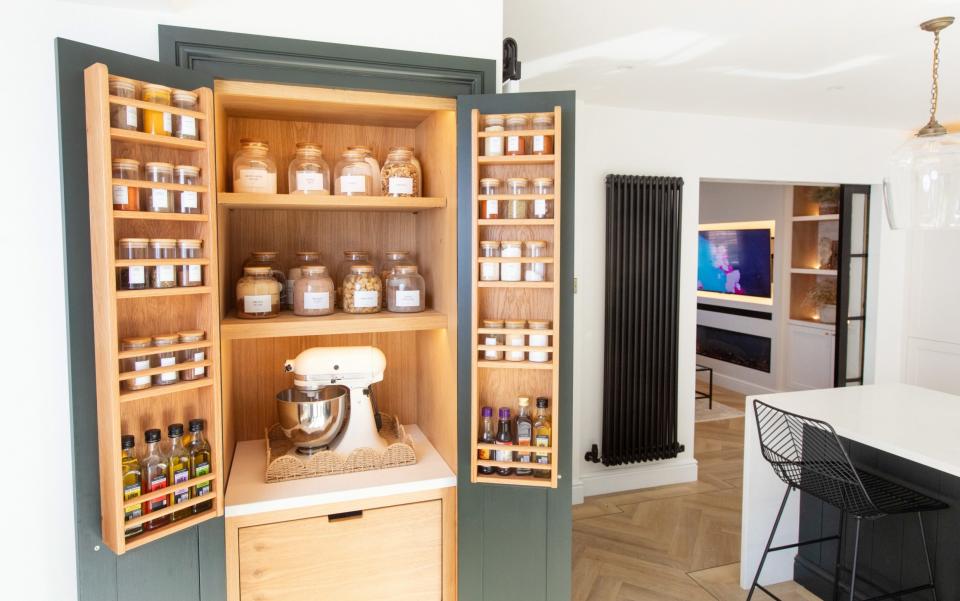
Bianco stratus quartz with white a white vein running through it tops the counters. A creamy white shade, Safe Play by Coat Paints, covers the rest of the walls. Pendant lights from Jim Lawrence UK hang down over the peninsula. “Everyone calls them upside down wine glasses,” said Jane.
At £250 a pendant, Jane says they were one of her “splurge” items and despite shopping around for a cheaper alternative she couldn’t find any lights that looked better.
Francesca says the choice of white quartz in a smaller kitchen brightens the space up, however it can come with downsides. The fresh white clean look can appear clinical showing every spillage. “Luckily it’s non-porous so it won’t stain,” she added, “but it will show every crumb.
“The little pantry is such a great addition to the space. It shows that you don’t need a massive space to be creative, just be clever with what you have.”
The use of a smoked mirrored backsplash behind the cooker, she adds, is an effective way to brighten up the darkest of kitchens. “With the window nearby you can see the difference it makes in bouncing the light around the room.”
She added: “I love the pops of black throughout, but having the cabinetry all neutral might have achieved a cleaner look, particularly on the cooker hood.”
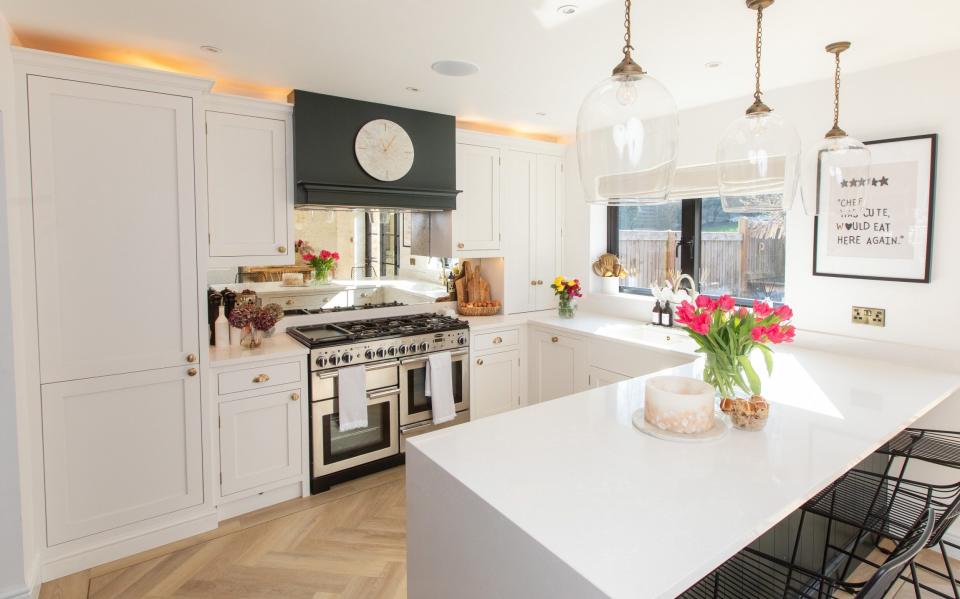
Living area
Jane and Paul’s open plan layout can be broken up by closing the pocket doors that divide the kitchen from the living room. When thrown open, they disappear into a recess in the wall.
The couple chose to add wainscot panelling and a dado rail to the walls to create interest in the living room and stop it from looking too modern and stark. She chose a neutral and muted colour palette, using Slipper Satin and Skimming Stone shades.
To complete the look, Jane wanted to add coving. “The quotes we got were eye watering,” she said. To save money, they made a controversial decision: they bought polystyrene coving from B&Q’s Nayak range which cost £70, compared to a £600 bill to pay for standard coving to be installed by a professional.
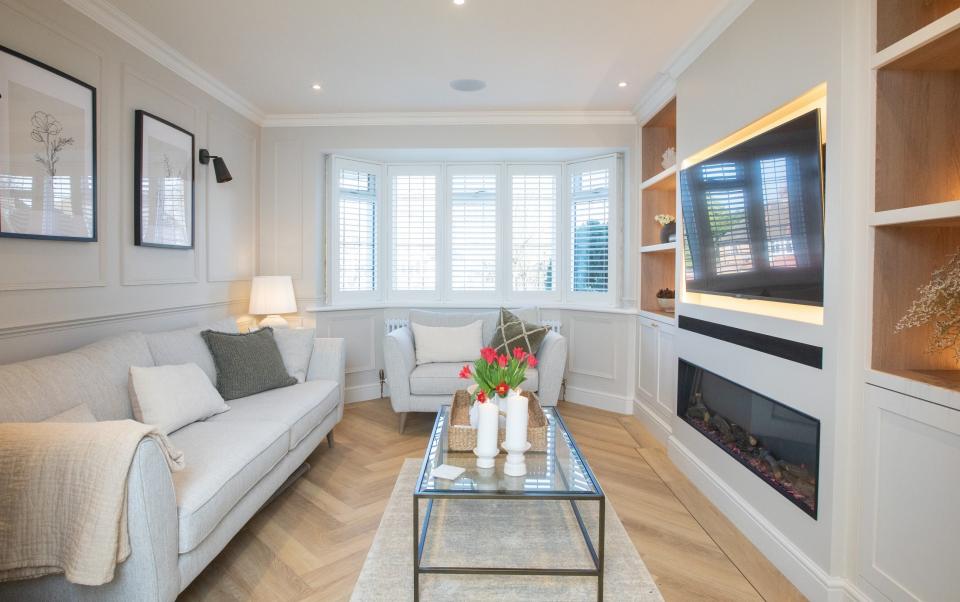
“Jane has achieved her goal of bringing character and warmth to the living room by adding panelling and coving,” said Francesca. “Choosing polystyrene is controversial but can be a great budget option. It’s not as hard wearing as traditional coving and can be a nightmare to install as it breaks easily.
“If you go down the same route, make sure to get fire-retardant coving. Even so it will start to melt at a much lower temperature than a hardened standard polyurethane option.”
Jane continued with her theme of adding warmth by choosing a blonde oak LVT floor and a faux brass border, which is actually made of rubber. “We love the effect and think it makes a feature out of the floor,” said Jane. The rubber strip cost £50.
Media wall
Paul made the media wall himself for just under £1,000. Instead of painting the back panels the same colour as the media wall, they decided to use textured wallpaper from B&Q at less than £15 a roll.
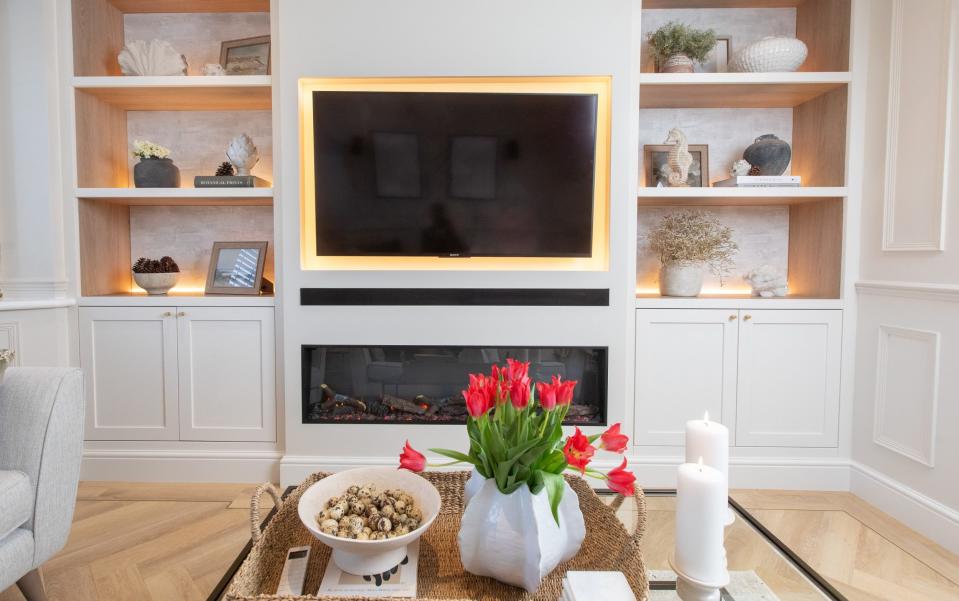
Francesca said: “The media wall is beautiful. The use of the wallpaper at the back elevates the space. Using strip backlighting is a clever way to soften the feature and add layered lighting. But if you fancy emulating the look, make sure you can control the lighting separately to avoid being distracted whilst watching TV in the evening.”
Choosing a glass table is a good way of making a room feel bigger because you are not obscuring the sight lines when you look into the space.
Francesca was not on board with the brass border, however. This trick, she says, is usually used for much larger spaces where you want to segregate areas, such as in a big hotel reception space. “I’m not sure it’s necessary here,” she added.
Alternative ideas to warm up a room include adding natural materials like woods and leather, and to introduce some softer fabrics in warm tones. Adding textural accents like knits and wovens to a space are an easy way to do this.
And don’t always buy new, she adds. “A couple of vintage items can help to make a room feel more homely and lived in,” said Francesca.
Below the media is a black fake panel that gives the impression an expensive sound bar sits below the television. The panel, which cost £20 to make, is in fact hiding the couple’s Sky box, smaller sound bar, cables and Playstation games console.
Ceiling speakers, another of Jane’s bargain finds, are installed throughout the ground floor, allowing the couple to sync the rooms together when they’re entertaining or have different music playing in each room.
“One sound specialist quoted us £2,500 for six speakers. If you want all the bells and whistles then maybe that’s the right decision but we don’t.” They found three pairs of Wifi, Bluetooth speakers online for £520.
Francesca added: “By splashing out on a couple of key items here and there, but complimenting these features with classic, more affordable items, Jane and Paul have achieved an elevated look without the price tag.”

